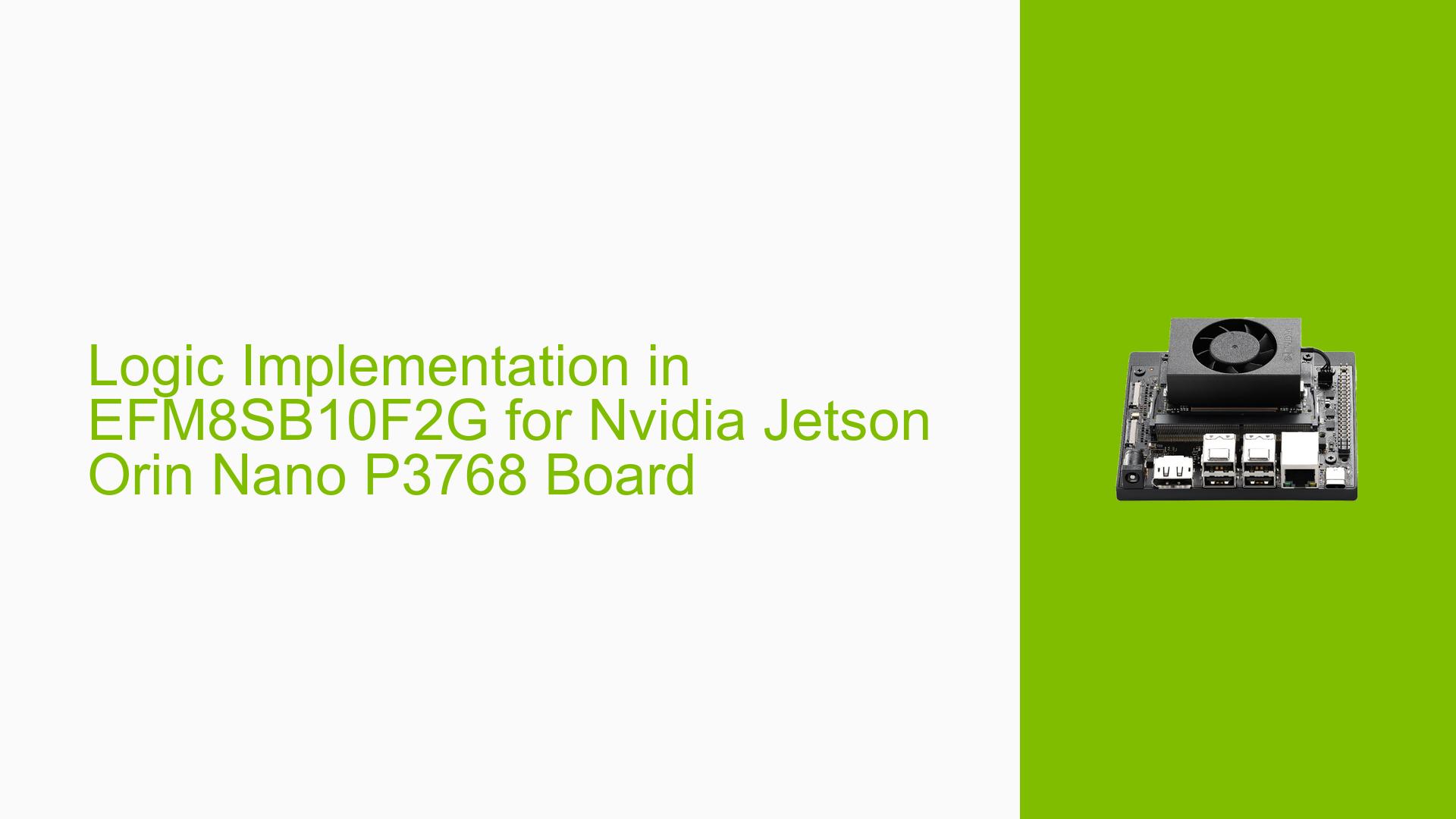Logic Implementation in EFM8SB10F2G for Nvidia Jetson Orin Nano P3768 Board
Issue Overview
Users are seeking information about the logic implemented in the EFM8SB10F2G microcontroller for the Nvidia Jetson Orin Nano P3768 board. Specifically, there is interest in understanding the logic for the Input/Output (I/O) pins of the EFM8SB10F2G controller. This information is crucial for developers and engineers working with the P3768 board who need to interface with or modify the microcontroller’s functionality.
Possible Causes
The need for this information could arise from several scenarios:
-
Custom Development: Users may be developing custom applications or modifications for the P3768 board that require interaction with the EFM8SB10F2G controller.
-
Troubleshooting: Developers might be experiencing issues related to the microcontroller’s behavior and need to understand its logic to diagnose problems.
-
Integration Requirements: Some projects may require integration of the P3768 board with other systems, necessitating a deep understanding of the microcontroller’s logic.
-
Performance Optimization: Knowledge of the implemented logic could be crucial for optimizing the performance of applications running on the P3768 board.
-
Educational Purposes: Researchers or students might be studying the board’s architecture for academic or learning purposes.
Troubleshooting Steps, Solutions & Fixes
-
Official Documentation:
- Check the official Nvidia Jetson documentation for any available information on the EFM8SB10F2G controller used in the P3768 board.
- Look for technical specifications, datasheets, or developer guides that might provide insights into the microcontroller’s functionality.
-
Contact Nvidia Support:
- Reach out to Nvidia’s official support channels for developer inquiries.
- Explain your specific use case and why you need information about the EFM8SB10F2G logic implementation.
-
Community Forums:
- Engage with the Nvidia Jetson developer community through official forums or third-party developer communities.
- Share your specific requirements and see if other developers have found workarounds or alternative solutions.
-
Reverse Engineering (with caution):
- As a last resort, consider reverse engineering the microcontroller’s behavior.
- Use logic analyzers or oscilloscopes to observe the I/O patterns during different operations.
- Note that this approach may void warranties and should be done carefully to avoid damaging the board.
-
Alternative Approaches:
- If the microcontroller logic remains inaccessible, consider developing your solution using the available documented interfaces of the P3768 board.
- Utilize the board’s GPIO pins, I2C, SPI, or other standard interfaces to achieve your project goals without directly interacting with the EFM8SB10F2G controller.
-
Vendor Consultation:
- As suggested in the forum, check with the vendor who supplied the P3768 board.
- They may have additional information or be able to provide guidance on working with the EFM8SB10F2G controller.
-
Legal and Ethical Considerations:
- Be aware that the logic implementation might be proprietary information.
- Respect intellectual property rights and terms of use for the P3768 board and its components.
-
Documentation and Sharing:
- If you discover any non-proprietary information about the EFM8SB10F2G logic through your research, consider documenting and sharing it with the community, while respecting any legal or ethical constraints.
Remember that accessing or modifying proprietary firmware or logic implementations may void warranties or violate terms of service. Always prioritize official channels and documented interfaces when working with the Nvidia Jetson Orin Nano P3768 board.
